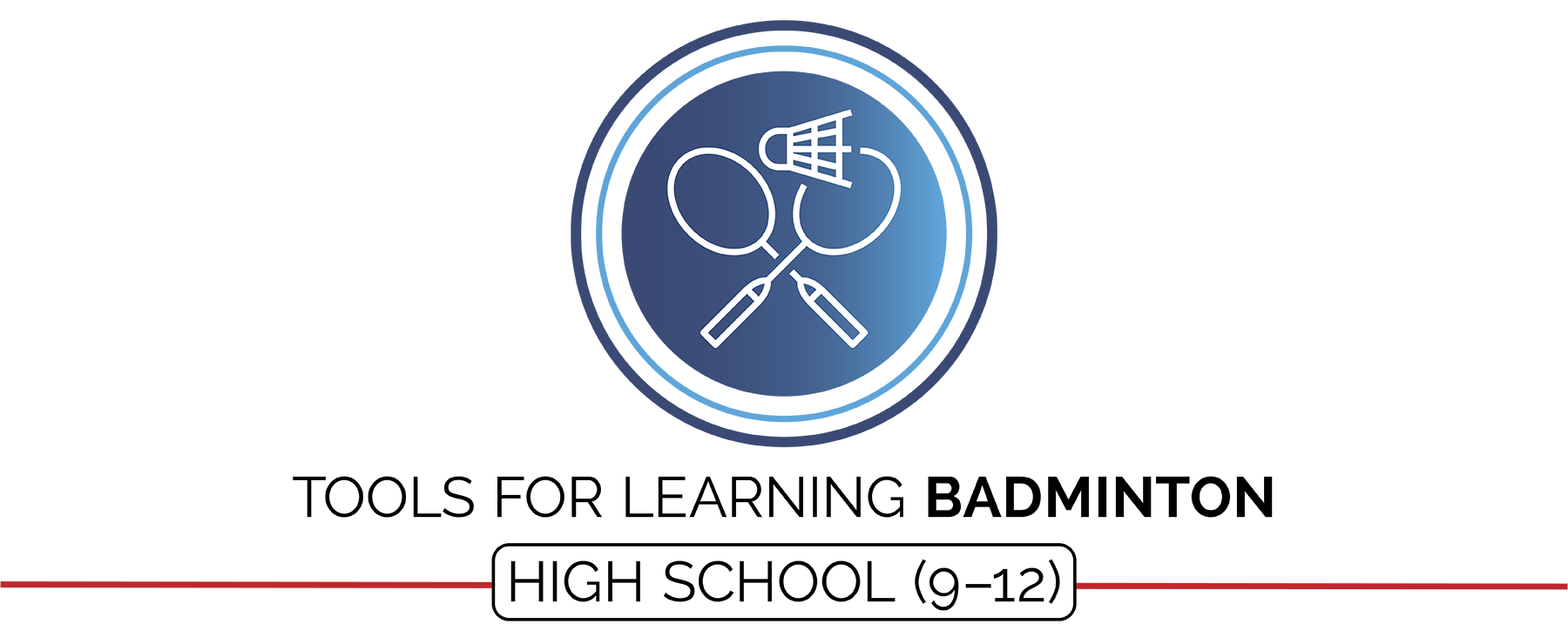Created by: Jenna, Knapp, Aaron Hart
Special Contributions: Deedi Boland, Charla Tedder (Parker) Krahnke
Design: Jennifer Truong & Aaron Hart
Badminton can be played as a recreational or competitive sport throughout an individual’s lifetime. It’s played in the Summer Olympics and summer family barbeques. This module prepares students with the confidence and skill needed to be active whenever a badminton opportunity develops.
Module Documents
Complete Module Packet:
Module Overview:
Required Materials:
All Module Activities:
Sample Lesson Plan:
Academic Language Cards:
Universal Design Adaptations:
Badminton 101 Rule Sheet:
Badminton 101 Skill Cue Charts:
Badminton 101 Diagrams:
Movement Concept Posters:
Round Robin Tournament Card:
Activity Plans
Volley Challenge:
Badminton 101:
Move and Clear:
Racquet Square:
Target Practice:
Cover the Court:
King/Queen of the Court:
Round Robin Tournament:
Assessments
Holistic Performance Rubric:
Academic Language Quiz:
Movement Concept Self Analysis:
Wikipedia Scavenger Hunt:
Badminton 101 Diagram Quiz:
Self-Efficacy and Social Support Inventory:
Fitness Portfolio Page:
Teacher Evaluation
Teacher Self-Evaluation and Reflection Guide:
Planning Tools
Blank Activity Plan Template:
Blank Lesson Plan Template:
Can’t see the file links? Register for FREE today to access all of the modules. SIGN UP HERE
National Standards and Outcomes Focus for Badminton
Standard 1. Demonstrates competency in a variety of motor skills and movement patterns.
- L1&2. Demonstrates competency and/or refines activity-specific movement skills in two or more lifetime activities (net/wall games) (L1). Refines activity-specific movement skills in one or more lifetime activities (net/wall games) (L2).
Standard 2. Applies knowledge of concepts, principles, strategies, and tactics related to movement and performance.
- L1&2. Applies the terminology associated with exercise and participation in selected individual-performance activities, dance, net/wall games, target games, aquatics, and/or outdoor pursuits appropriately (L1); Identifies and discusses the historical and cultural roles of games, sports, and dance in a society (L2).
- L1&2. Uses movement concepts and principles (e.g., force, motion, rotation) to analyze and improve performance of self and/or others in a selected skill (L1); Describes the speed/accuracy trade-off in throwing and striking skills (L2).
Standard 3. Demonstrates the knowledge and skills to achieve a health-enhancing level of physical activity and fitness.
- L2. Develops and maintains a fitness portfolio (e.g., assessment scores, goals for improvement, plan of activities for improvement, log of activities being done to reach goals, timeline for improvement) (L2).
Standard 4. Exhibits responsible personal and social behavior that respects self and others.
- L1. Exhibits proper etiquette, respect for others, and teamwork while engaging in physical activity and/or social dance (L1).
- L1. Uses communication skills and strategies that promote team/group dynamics (L1).
- L1. Applies best practices for participating safely in physical activity, exercise, and dance (e.g., injury prevention, proper alignment, hydration, use of equipment, implementation of rules, sun protection) (L1).
Standard 5. Recognizes the value of physical activity for health, enjoyment, challenge, self-expression, and/or social interaction.
- L1&2. Identifies the opportunity for social support in a self-selected physical activity or dance (L1); Evaluates opportunities for social interaction and social support in a self-selected physical activity or dance (L2).

